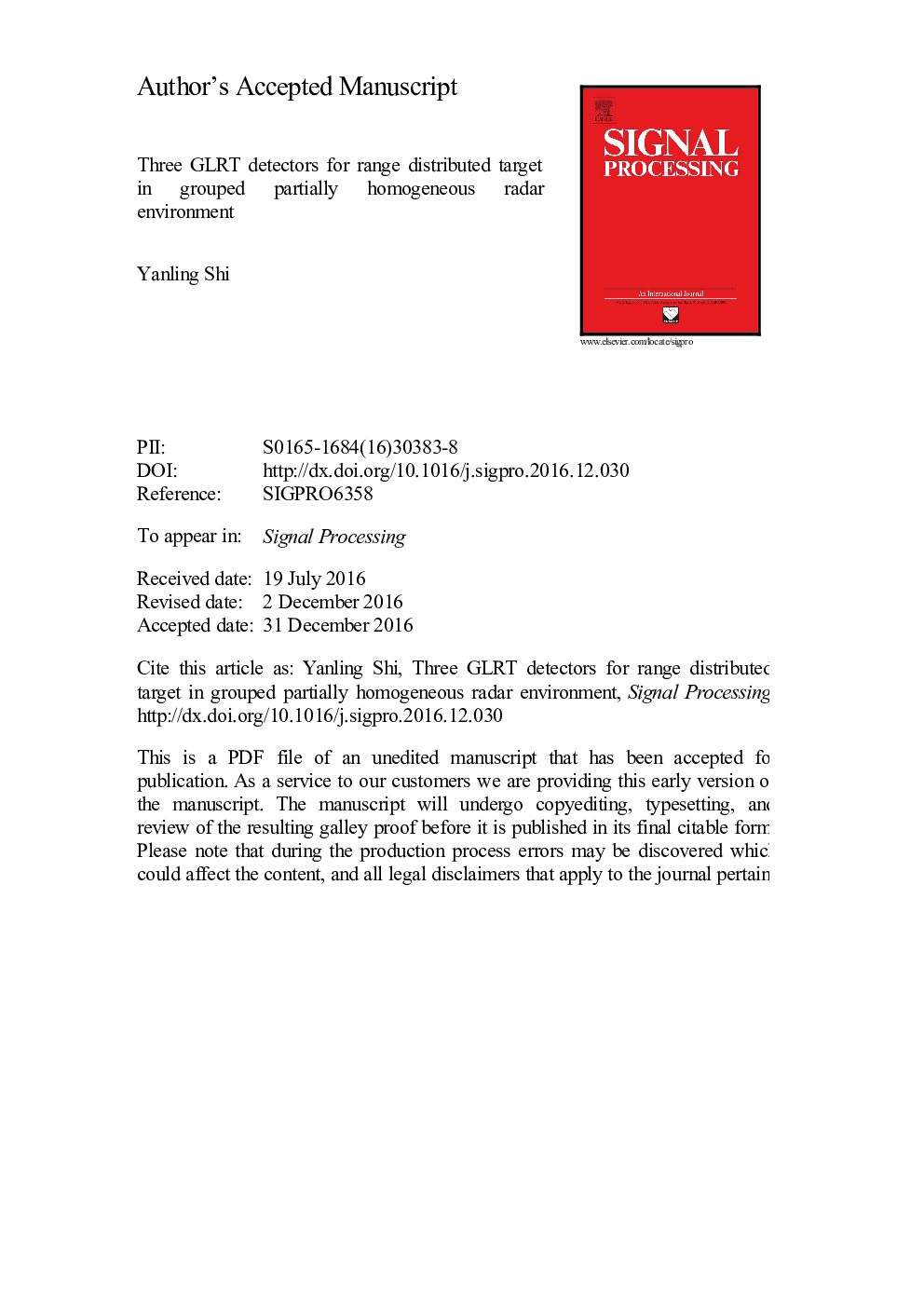| Article ID | Journal | Published Year | Pages | File Type |
|---|---|---|---|---|
| 4977569 | Signal Processing | 2017 | 18 Pages |
Abstract
In this paper, we consider the range distributed target detection in partially homogeneous (PH) clutter which displays different statistical properties in adjacent range cells. We propose a group method that adjacent cells with slightly varying statistics are divided into a group. Given the cells group effects on deducing the generalized likelihood ratio test (GLRT), three detectors: one-step group GLRT (1S-G-GLRT), maximum a posteriori estimation group GLRT (MAP-G-GLRT) and two-step group GLRT (2S-G-GLRT) are developed. It is verified that the 1S-G-GLRT and 2S-G-GLRT are constant false alarm rate (CFAR) with respect to the scale parameter of texture and the estimated speckle covariance matrix. The experiments show that, in the simulated clutter, the three proposed detectors behave approximately similarly, all of them outperforming three existing detectors remarkably despite the effects of target models and group strategies. In the real clutter, the 1S-G-GLRT and MAP-G-GLRT have advantages over the detectors without grouping in PH real clutter.
Keywords
Related Topics
Physical Sciences and Engineering
Computer Science
Signal Processing
Authors
Yanling Shi,
